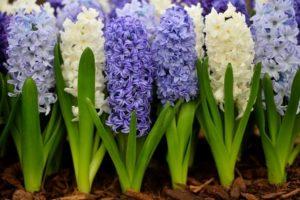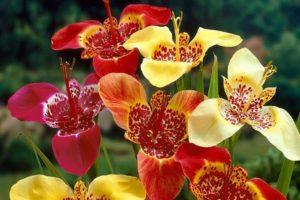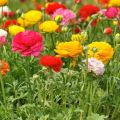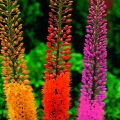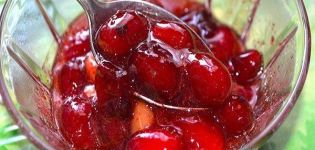Rules for planting and caring for rhododendrons in the open field, preparation for wintering
Planting and caring for rhododendrons in the open field has many features. First of all, it is important to choose the right place for growing this crop. In addition, it is necessary to water, fertilize, and trim in a timely manner. In order for the plant to grow and develop normally, it is recommended to protect it from diseases and pests. Preparation of the bush for winter is of no small importance.
Description
Rhododendron is a bush or tree that belongs to the Heather family. Depending on the type of culture, they are evergreen, deciduous or semi-deciduous. Annuals and perennials are also distinguished. All plants have a different shape of flowers, leaves, sizes, color of buds.
The flowers are characterized by superficial roots. They have many fibrous roots. Thanks to this, the culture can be easily moved to a new place. This helps her to quickly adapt to other conditions.
Flower leaves are sessile or petiolar. They can be ovoid or obovate, with solid or serrated edges. The flowers form corymbose or racemose inflorescences. They can be pink, white, red, and purple. Flowers are bell-shaped, tubular, funnel-shaped. After flowering, a box with many seeds appears.
Properties
The plant has medicinal properties, which allows it to be used in medicine. Some types of rhododendrons include ericolin, andromedotoxin. They also contain arbutin, rhododendrin. The foliage includes ascorbic acid.
Due to its unique composition, the culture has an analgesic, sedative, antipyretic effect. It also has diaphoretic and antibacterial properties. With the help of this culture, it is possible to remove excess fluid, cope with puffiness, palpitations, and reduce pressure.
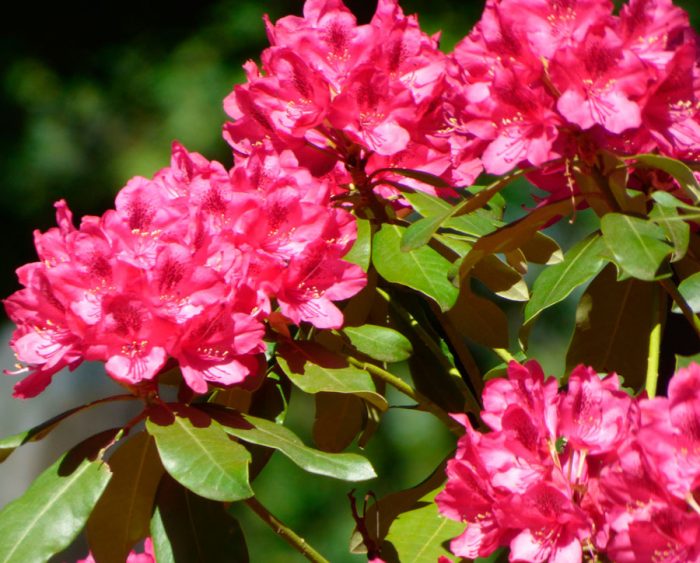
At the same time, the plant cannot be considered completely safe. Substances made on its basis are prohibited for use by people with dangerous kidney pathologies and tissue death. They are also contraindicated in pregnancy and lactation.
Types and varieties
Today, many varieties of plants are known that have certain characteristics.
Deciduous
A characteristic feature of such plants is the dropping of leaves for the winter. Many cultures fall into this category.
Japanese
This plant has excellent decorative properties. It is a branchy bush that grows up to 2 meters. The leaves are green. Flowers differ in the shape of a bell and reach 8 centimeters. They can be orange or red.
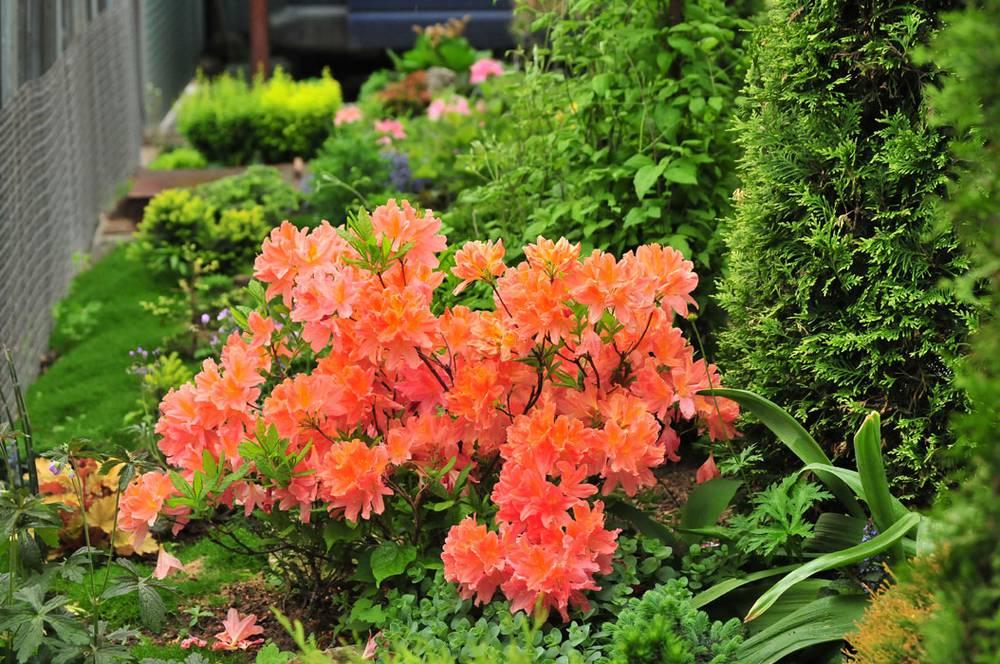
Fireworks
This is a fairly dense shrub that grows up to 1.8 meters. It is characterized by bright green leaves, which take on a yellow-red hue in autumn. The flowers are fiery red and large in size. In winter, the flower should be insulated.
Evergreen
Such plants do not shed foliage for the winter. Therefore, they remain decorative all year round.
Daursky
This evergreen plant is capable of reaching 2-4 meters. It has thin branches and small leaves. Flowering lasts 3 weeks. The bushes are decorated with purple-pink flowers. The plant has excellent frost resistance.

Adams
It is a branchy shrub that reaches 50 centimeters in height. Its shoots are covered with glandular villi and dense leaves. The flowers have a pink tint and form corymbose inflorescences.
Caucasian
This is a short plant with creeping branches. Its foliage is oval in shape. The flowers are funnel-bell-shaped and yellow in color.
Hybrid
This category includes hybrids that are grown in summer cottages. They have many varieties.
German cultivar Alfred
This evergreen crop reaches a height of 120 centimeters. The crown size is 1.5 meters. The bush is decorated with elongated dark green leaves. The plant has purple buds.

Blue Peter
This plant grows to 1.5 meters. The bush is characterized by a spreading crown and blue inflorescences. They are characterized by corrugated edges.
Jacksoni
This plant reaches 2 meters. There is also a lower variety that does not exceed 80 centimeters. The bush is decorated with elongated leathery leaves. The flowers have a pink tint during blooming, but then they turn white.
Rose Marie
This plant grows up to 120 centimeters. The crown can grow up to 1.5 meters. The leaves are waxy and light green in color. The flowers are pale pink in color. They have a purple tint in the center.
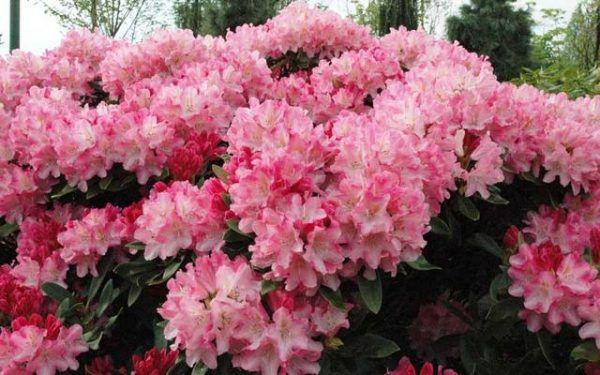
Nova Zembla
This is a Dutch hybrid that can grow up to 3 meters. Shoots are directed almost vertically. The bush is decorated with large leathery leaves with a glossy texture. Large flowers reach 6 centimeters in diameter. They have a red tint and a black spot.
Cunningham
It is a popular variety of the Caucasian rhododendron that grows up to 2 meters. It is characterized by elongated leathery leaves. The flowers are white in color and have a yellow-brown spot.
Frost resistant
In regions with harsh climates, it is recommended to grow special varieties of rhododendrons that are resistant to frost.
Roseum Elegance
It is an evergreen crop that reaches a height of 3 meters. It is characterized by a dense and dense crown. The dark green foliage has a glossy texture. The flowers have a purple hue.
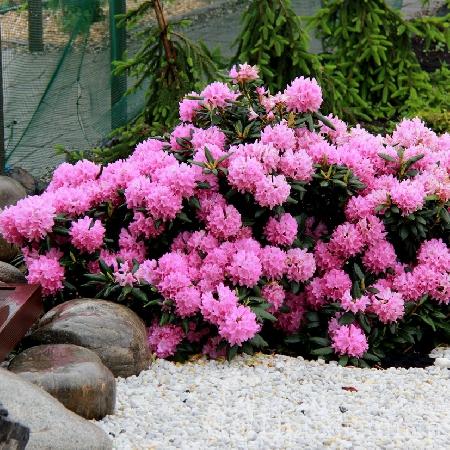
Nova Zembla
It is a beautiful hybrid that grows up to 2.4 meters in height. The flowers are bright pink and burgundy spots. They are bell-shaped in shape and form spherical inflorescences.
Grandiflorum
This is one of the oldest varieties. It is characterized by a sprawling spherical crown and leathery leaves. The shrub is considered to be very frost resistant and grows rapidly. It begins to bloom in June. During this period, the bush is decorated with purple flowers.
Golden Lights
This is a deciduous variety of culture. The bushes are adorned with cone-shaped orange flowers that create an attractive contrast to the dark purple leaves. Flowering begins quite early - at the end of May.

White Lights
It is a deciduous plant that can withstand temperatures as low as -42 degrees. In May, pink buds with small golden elements appear on the bushes. After a while, they turn white.
Rosie Lights
Another deciduous crop that can withstand frosts down to -42 degrees. This bush serves as a decoration for any garden. In late spring or early summer, pink flowers adorn it.
Grandmother
This variety belongs to the Japanese plant variety. The shrub is used to form curbs. Also small hedges are made from it.
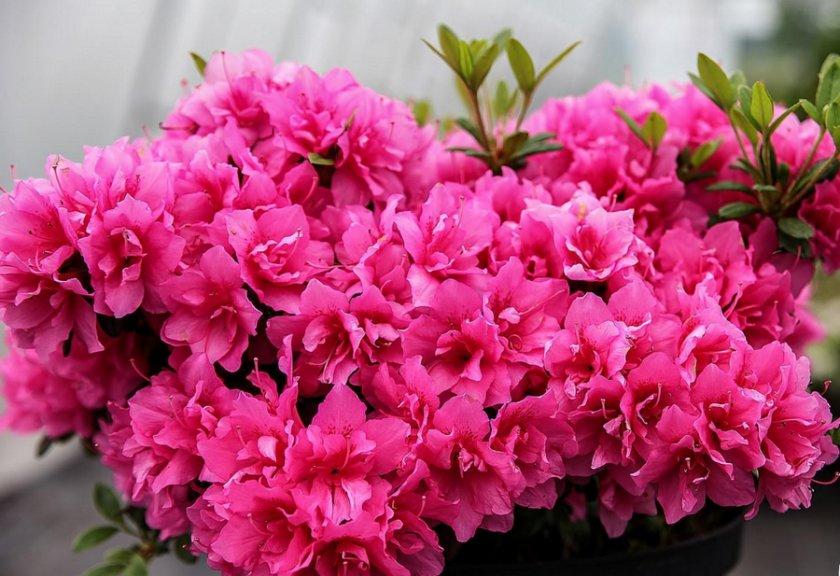
Impeditum Golden Lights
It is a deciduous rhododendron. The bushes have beautiful orange blossoms. The culture begins to bloom at the end of May and easily withstands even the most severe frosts.
English Roseum
This plant can easily withstand exposure to direct sunlight and frost. It is characterized by bright lilac-pink inflorescences, which are similar in shape to bells.
The culture grows well on moist, well-drained soil that contains a lot of humus.
Karens Mount
It is a spectacular plant that is compact in size and has red-purple inflorescences. In the fall, the foliage turns wine.
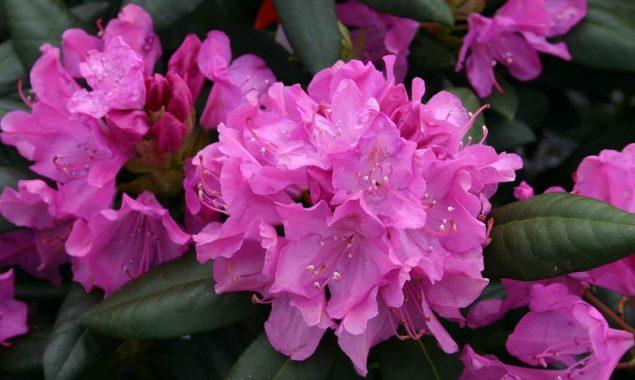
St Helens
It is a deciduous crop that is highly resistant to frost. It is able to withstand temperatures as low as -32 degrees. The plant is characterized by unusual salmon-pink flowers, which are similar in shape to bells.
Caractacus
This plant has a wide crown. It grows rather slowly. The bush begins to bloom in May. At this time, the culture is decorated with purple-red inflorescences with a light center.
Permanent residence Elite
It is a small-leaved variety that is compact in size and is characterized by abundant flowering. The culture is able to withstand temperatures as low as -32 degrees. The plant has raspberry-pink buds.

Intermediate
This horticultural crop is a cross between rusty and hard-haired rhododendron. It is of medium size and lush and beautiful flowering.
Site selection and preparation
In order for the plant to grow and develop normally, it is important to carry out planting work correctly. In this case, it is worth considering many features.
Requirements for a new location
The plant requires an area that is protected from drafts and has partial shade. It is best to plant the crop in an elevated location. In low places, the culture suffers from moisture stagnation and may die.
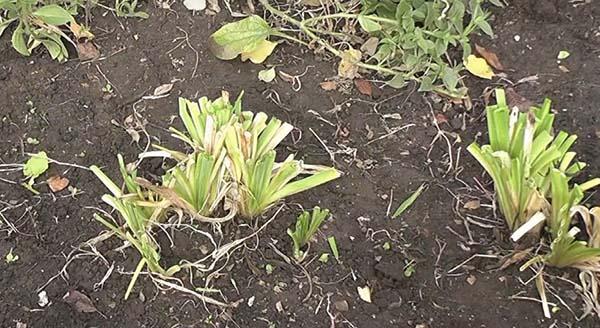
Choice of neighbors
For a culture to grow and develop normally, it needs to choose the right neighbors.
Good ones
Rhododendron should be planted alongside conifers. It can be placed near firs, pines or larches. It is also permissible to plant a flower near an apple, oak or pear tree.
Bad
Undesirable neighbors include maple, linden, birch. Also such plants include willow, birch, elm.
Soil and acidity
Rhododendron loves acidic soil. It is desirable that it contains a sufficient amount of peat.
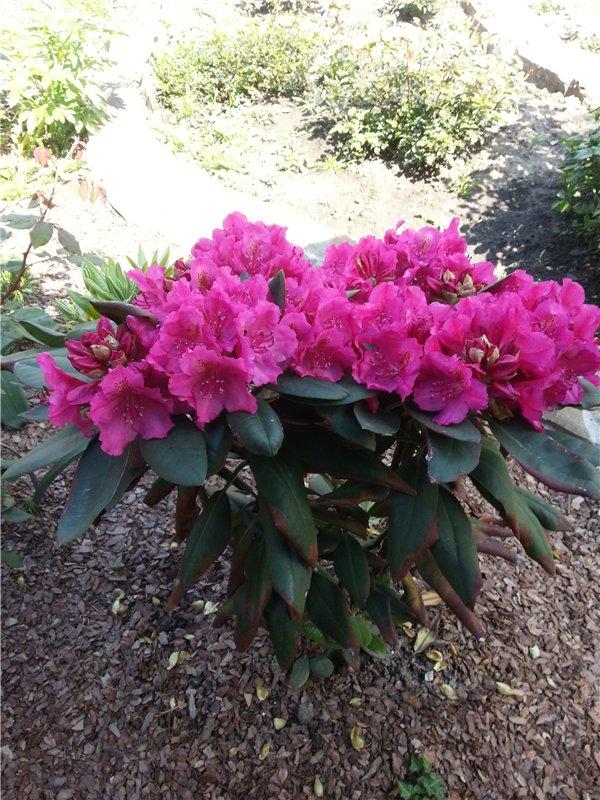
How to prepare potting soil for planting
If the soil has an undesirable composition, it can be changed. To prepare the optimal substrate, a mixture of peat, leafy soil and sand should be added to the depression. Sulfur should be used to acidify the earth.
Boarding time
Early spring is considered the ideal time for planting. Also, the crop can be planted in early autumn.
Landing scheme
To plant a culture, it is worth putting a drainage on the bottom of the groove and half filling the pit with the prepared substrate. If the seedling has open roots, they need to be straightened and placed in a hole. Then pour plenty of water over the bush. A seedling with closed roots is planted by transshipment.

Care
This plant needs systematic care.At the same time, it is not recommended to loosen the soil, since there is a risk of damage to the roots.
Watering
In order for the plant to develop normally, it must be properly cared for. It is especially important to maintain an optimal soil moisture level at the stage of budding and flowering. To moisten the soil, use standing or rainwater. When watering, it is recommended to soak the soil with moisture by 25-30 centimeters, but the moisture should not stagnate.
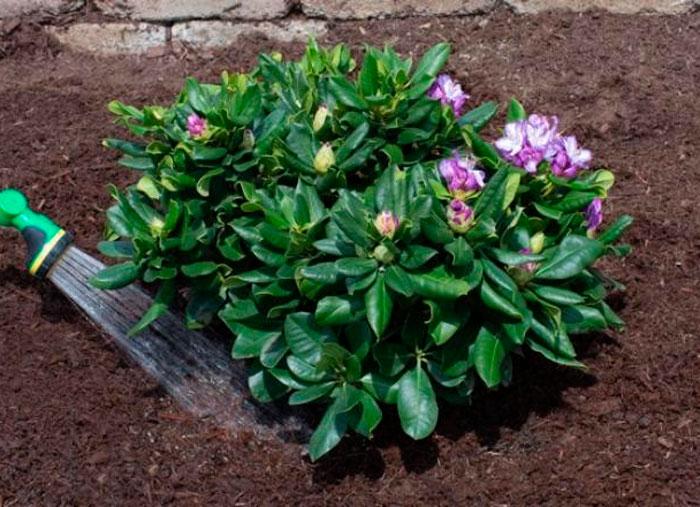
Top dressing
The plant needs to be fertilized from the first year of life. The first time feeding is applied in early spring, the last - at the end of July. For the plant, it is recommended to use liquid products that include horn meal and cow dung.
Mulching
After watering, it is recommended to cover the soil with a mulch layer. It helps to avoid moisture evaporation and prevents the development of weeds. Peat or sawdust is used as mulch.
Cover for the winter
In the fall, before the cold weather comes, the bush needs to be covered. To do this, insert spruce or pine branches between the shoots, and then pull the bush with a rope. Then cover the plant with burlap. With the arrival of heat, the material must be removed.
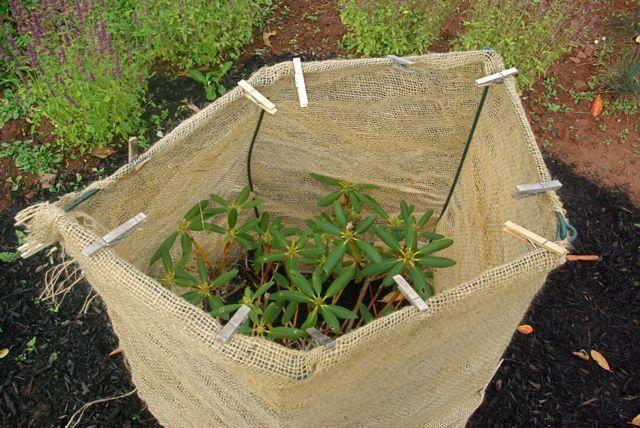
Pruning
The bushes are distinguished by the correct shape, therefore, they do not require formative pruning. Most often, a culture needs a sanitary procedure. It is held in early spring. Sections should be lubricated with garden pitch.
Pests and diseases
If agrotechnical recommendations are violated, the bush is exposed to pest attacks and the development of diseases.
Mealybugs
These insects often provoke damage to plants, damaging the bark and attaching to branches. Aktellik, Fufanon will help to cope with them.
Shields
These are quite dangerous pests. To cope with scale insects, it is recommended to use a solution of Karbofos.
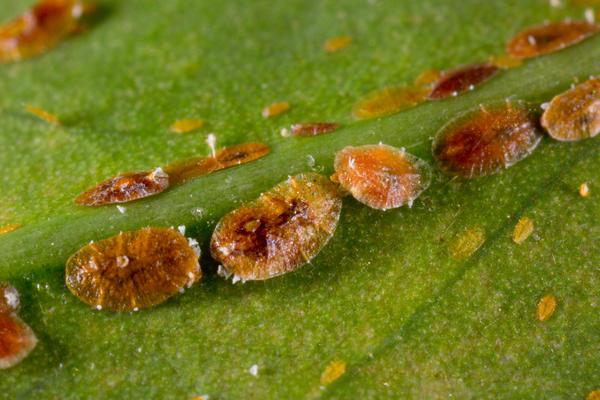
Spider mites
These parasites provoke damage to the leaf plates. Diazinon is used to kill ticks.
Bedbugs
Another dangerous pest that often affects the flower. Diazinon helps to destroy parasites.
Weevils
The parasite feeds on the foliage and flowers of the plant. To deal with pests, Diazinon should be used.
Rhododendra flies
These pests provoke serious crop damage. The solution of Karbofos will help to destroy them.

Snails and slugs
It is recommended to collect these pests by hand. It is also worth treating the plant with a solution of fungicides.
Leaf spot
In most cases, the disease is associated with insufficient aeration of the roots. Fungicides will help to cope with it.
Cancer
In this case, the plant will have to be removed. For prevention, it is recommended to use Bordeaux liquid.
Chlorosis
The development of the disease is accompanied by a change in the color of the foliage. Iron chelate will help to cope with the problem.
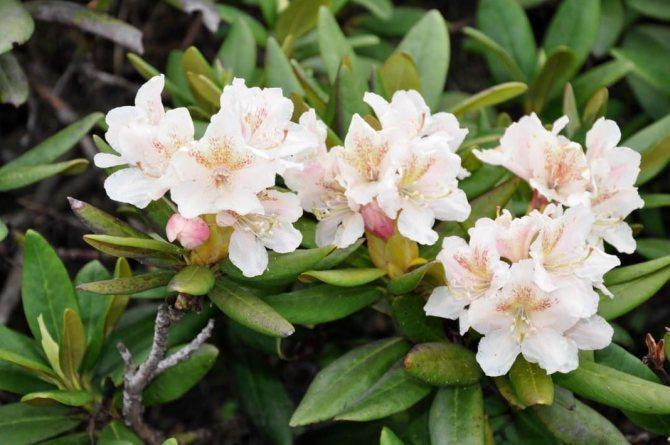
Rust
In such a situation, it is worth using products containing copper. Bordeaux fluid is perfect.
Transfer to another location
If you choose the wrong site, it is worth replanting the culture. This should be done in early spring or fall. You will have to move the bush to a new place with a lump of soil. It is important not to damage the roots.
The procedure should be carried out in cloudy weather. At first, it is important to cover the plant to protect it from the sun.
Reproduction
The culture can be propagated by the following methods:
- layering;
- cuttings;
- seeds;
- dividing the bush;
- vaccination.
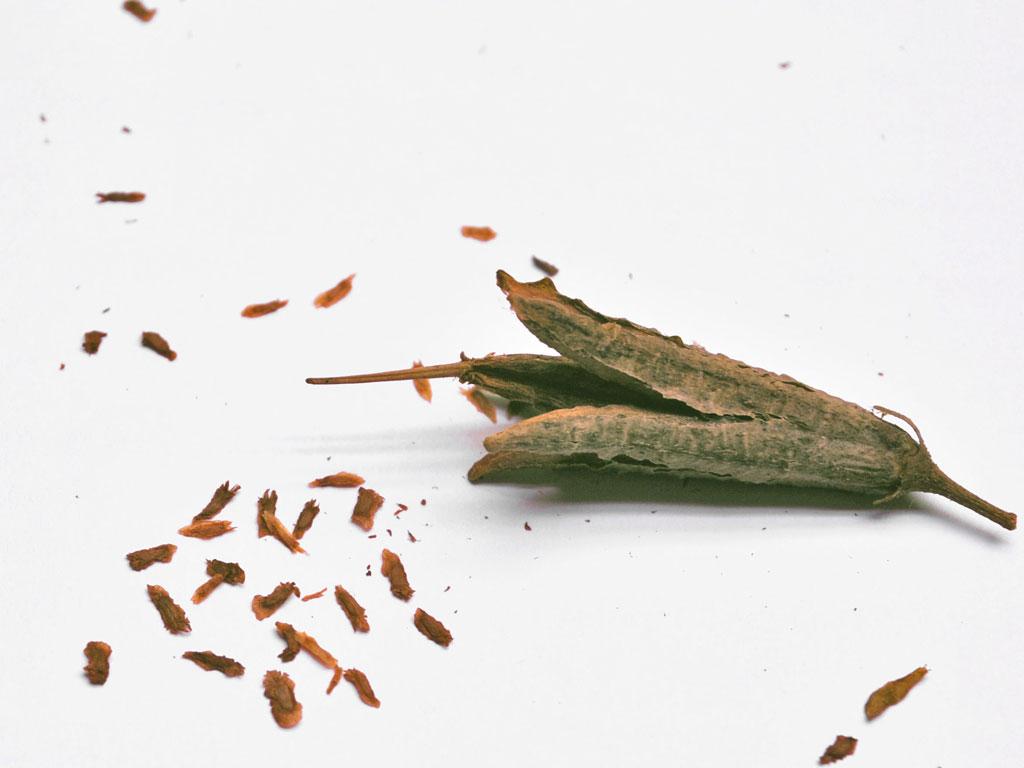
Answers on questions
Should rhododendrons be covered for the winter? Despite the resistance to frost, it is recommended to cover the bushes in the garden. This is especially true for young plants. An adult rhododendron winters well without insulation.
How to acidify the soil? If necessary, this procedure can be carried out with citric acid.
Can rhododendrons be transplanted? If you choose the wrong site, this is allowed. But it is important not to damage the roots.
Reviews
Numerous reviews of plants indicate their popularity:
- Valentina, 62 years old: “For many years I have been growing this beautiful flower in my country house.In order for the plant to develop normally, you need to choose the right garden for it. At the same time, the place must be protected from the bright sun and wind. "
- Ivan, 54 years old: “I really like this plant. In order for the bush to develop normally and bloom profusely, it needs to be properly cared for. It is especially important to water the bushes in a timely manner. However, moisture stagnation should be avoided. "
Rhododendron is a popular ornamental plant that is grown by many growers. In order for the culture to develop normally and please with lush flowering, it must be watered and fed in a timely manner.
